Extinction: Conservation success set against 31 lost species
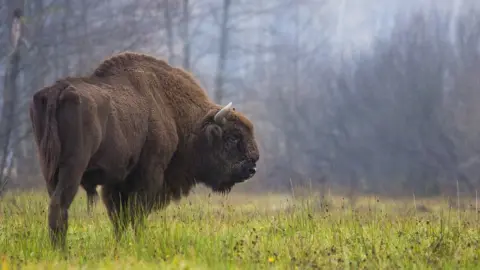 Rafal Kowalczyk
Rafal KowalczykThe European bison has moved a step back from the brink of extinction, according to an update of the official extinction list.
Europe's largest land mammal was almost wiped out by hunting and deforestation a century ago, but numbers have now risen to over 6,000 in wild herds across the continent.
The recovery is regarded as a "conservation success" story.
But 31 species of plants and animals have gone extinct in the latest tally.
They include frogs, fish, several plants and a bat.
The extinction list by the IUCN (International Union for the Conservation for Nature) assesses the survival prospects of plants, animals and fungi.
In the third and final update for this year, Dr Bruno Oberle, director general of the IUCN, said the recovery of the European bison and 25 other species demonstrated "the power of conservation".
But the growing list of extinct species "is a stark reminder that conservation efforts must urgently expand", he added.
 Rafal Kowalczyk
Rafal KowalczykThe IUCN has now assessed almost 130,000 species of plants and animals, of which more than a quarter are threatened with extinction.
In the latest update of the "RedList", there is good news and bad news for a range of mammals, birds and amphibians.
Despite good news for animals such as the European bison, a total of 31 species have been declared extinct, including three frogs of Central America, 17 freshwater fish of the Philippines, the Lord Howe long-eared bat and 11 plant species.
The frogs have been hit by a deadly fungal disease, while the fish have disappeared due to predation by introduced species and over-fishing.
A dolphin found in the Amazon river, the tucuxi, has been classed as endangered. All the world's freshwater dolphins are now threatened.
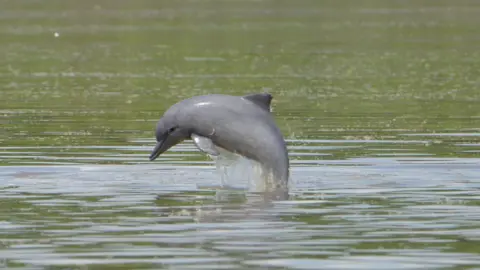 Fernando Trujillo
Fernando TrujilloThe small grey dolphin is in trouble due to accidental capture in fishing gear, pollution and the damming of rivers. The IUCN says its survival rests on eliminating the use of gillnets - curtains of fishing net that hang in the water - and reducing the number of dams in the waters where they live.
In the bird kingdom, the Andean condor, secretary bird, bateleur and martial eagle are now at high risk of extinction.
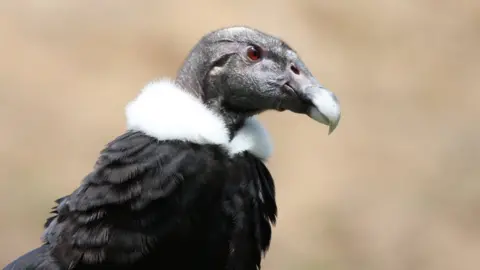 Nathan Rupert
Nathan RupertIan Burfield of BirdLife International, which compiles the extinction list for birds, said while any species being listed as threatened was obviously bad news, "it doesn't have to be a tragedy".
"For many, the road to recovery begins here, as listing brings visibility to their plight and helps to raise their conservation priority," he explained.
The benefits of conservation action are being seen for a number of animals. They include an upturn in numbers for the European bison and another 25 species of plants and animals, including skates, amphibians and birds.
The "conservation successes" announced on Thursday "provide living proof that the world can set, and meet, ambitious biodiversity targets", said Dr Jane Smart, global director of IUCN's Biodiversity Conservation Group.
Good news stories
Species: The European Bison (Bison bonasus)
Status: Moved from Vulnerable to Near Threatened
Large herds of wild bison once roamed across Europe, as recorded in ancient cave paintings. But human pressures and hunting caused their downfall, and by the 1920s, the large mammal was extinct, except in zoos.
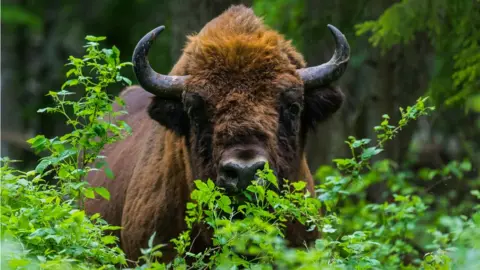 Rafal Kowalczyk
Rafal KowalczykEfforts to return the bison to its natural landscape started in Poland in the 1950s.
Numbers have grown from around 1,800 in 2003 to more than 6,000 last year, mainly found in Poland, Belarus and Russia.
The bison are scattered in almost 50 herds, most of which are too small to survive without continued conservation work.
Dr Rafal Kowalczyk, a bison expert from the Polish Academy of Sciences, told BBC News: "The species is very vulnerable to extinction but with this international effort we were able to save the species, to increase its number of herds and increase its distribution. and I hope the future of the species is bright."
Species: The red kite
Status: Moved from near threatened to least concern (the lowest category of extinction risk)
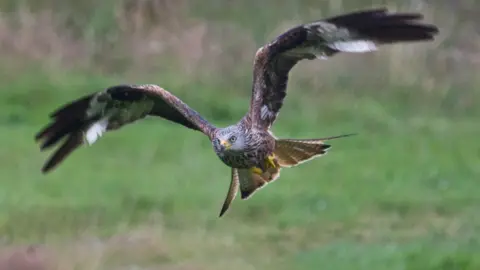 Richard Towell
Richard TowellThe red kite was declining across Europe, due to poisoning from pesticides, persecution and loss of natural spaces. But legal protection led to an action plan, including large-scale reintroduction projects. The bird is now recovering and has become a common sight in many areas, although poisoning and persecution are still a problem in some places.
Species: The Oaxaca treefrog
Status: Moved from Critically Endangered to Near Threatened
Many amphibians are in trouble, but actions by local communities in Mexico have helped to protect this frog's habitat.
Follow Helen on Twitter.
